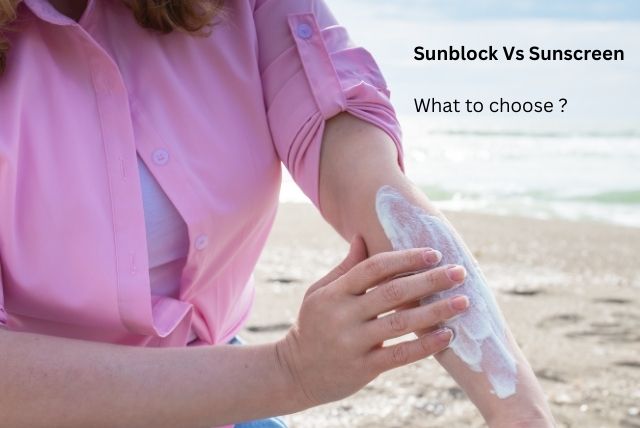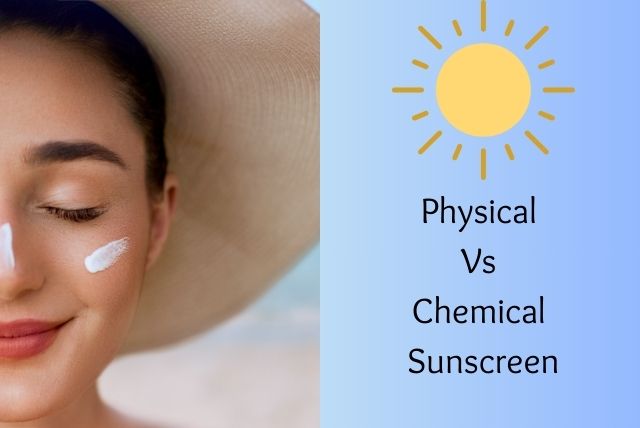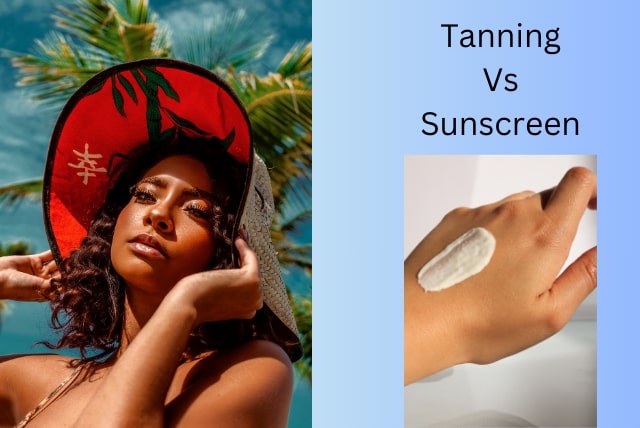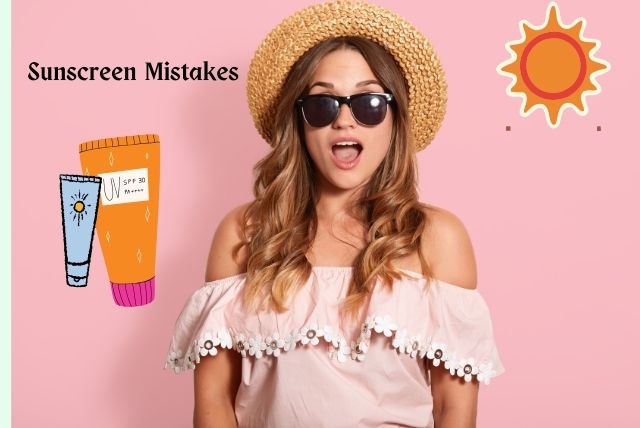Sun protection is a vital aspect of maintaining healthy skin and preventing long-term damage caused by excessive sun exposure. Among the various tools available for safeguarding our skin, sunscreen plays a crucial role. When it comes to sunscreen, you may have come across the term SPF. But what exactly is SPF, and how does it contribute to sun protection? In this article, we will see what is SPF in sunscreen, unravelling its mysteries and shedding light on its importance in skin care.
What is SPF and how does it work?
SPF stands for Sun Protection Factor. It is a measure of a sunscreen's ability to protect the skin from harmful ultraviolet (UV) radiation emitted by the sun. SPF serves as a guide to understand the level of protection a particular sunscreen offers against UVB rays, which are primarily responsible for causing sunburn.
Now that we know SPF stands for Sun Protection Factor, it's important to understand what this factor signifies. SPF is a numerical value assigned to sunscreen products, indicating the level of protection they provide against UVB radiation. The higher the SPF value, the greater the protection against UVB rays.
What is SPF do to your skin?
SPF plays a critical role in shielding our skin from the damaging effects of the sun. By applying sunscreen with an appropriate SPF, we create a barrier between our skin and the harmful UVB rays. This helps prevent sunburn, skin damage, and premature aging, and reduces the risk of skin cancer.
SPF functions by absorbing or reflecting the UVB rays, thereby preventing them from penetrating the skin. When sunscreen is applied, it forms a protective layer that acts as a shield against the sun's harmful radiation. The rating indicates the sunscreen's ability to delay the onset of sunburn compared to bare skin.
To understand how SPF works, consider this: if your skin starts to burn after 10 minutes of sun exposure without any protection, using an SPF 15 sunscreen would, theoretically, allow you to stay in the sun 15 times longer (10 minutes x SPF 15 = 150 minutes) before experiencing sunburn.
It's important to note that while SPF primarily focuses on UVB protection, it's crucial to choose a broad-spectrum sunscreen that also guards against UVA rays. UVA rays contribute to premature aging, wrinkles, and skin damage. Therefore, look for sunscreens labelled as broad-spectrum to ensure comprehensive protection.
The dermatologist recommends Ultrasun sunscreen for different skin types and skin concerns with SPF 50 and also includes PA++++ rating which is the best SPF level & PA rating in sunscreens. Ultrasun sunscreens protect your skin from last up to 7 hours from harmful sun rays.
Factors Affecting SPF Effectiveness
Several factors can influence the effectiveness of SPF sunscreen. These include the amount of sunscreen applied, the frequency of reapplication, individual skin characteristics, and environmental conditions. To maximize the benefits, it is essential to follow proper application techniques and adhere to recommended reapplication intervals.
In our next section, we will explore the relationship between SPF and skin protection in more detail, emphasizing the importance in preventing sunburn, reducing the risk of skin cancer, and promoting overall skin health.

SPF's Role in Reducing the Risk of Skin Cancer & Sunburn
Skin cancer: Skin cancer is a serious concern, and protecting our skin from harmful UV radiation is crucial in minimizing the risk. Prolonged exposure to the sun's UVB rays can lead to DNA damage in the skin cells, which can eventually result in the development of skin cancer.
Using sunscreen with a high SPF significantly reduces the risk of developing skin cancer. It acts as a barrier that prevents a substantial amount of UV radiation from penetrating the skin and causing DNA damage. By consistently applying SPF sunscreen, you create a shield against harmful UVB rays, reducing the chances of skin cancer.
Sunburn: Sunburn is a common consequence of overexposure to UV radiation. It can cause immediate discomfort, pain, redness, and peeling of the skin. By using sunscreen with an adequate SPF, you create a protective barrier that significantly reduces the risk of sunburn. SPF acts as a safeguard against the harmful effects of UVB rays, allowing you to enjoy outdoor activities without suffering from painful sunburns.
Moreover, sunburns can have long-term consequences for your skin health. Repeated episodes of sunburn can lead to skin damage, premature aging, and an increased risk of skin cancer. By incorporating SPF into your daily routine, you take a proactive step towards preserving the health and vitality of your skin.
Benefits of SPF for Overall Skin Health
SPF offers benefits beyond sunburn prevention and reducing the risk of skin cancer. It also plays a vital role in maintaining overall skin health and preserving its youthful appearance. Exposure to the sun's UV radiation can lead to premature aging, including the development of wrinkles, fine lines, and age spots.
By incorporating sunscreen into your skincare routine, you provide your skin with an added layer of protection against the aging effects of the sun. It shields your skin from the damaging UVB rays that contribute to collagen breakdown and the breakdown of skin elasticity. This helps to maintain a more youthful, radiant complexion and delay the signs of aging.
Understanding the Level of Protection Offered by Different SPF Ratings 30 & 50
First of all, we need to know the difference between SPF 30 and SPF 50. These numbers indicate the level of protection provided by the sunscreen against UVB rays. Understanding these ratings can help you make informed choices about sun protection.
SPF 30 offers high protection against UVB rays, blocking approximately 97% of the sun's UVB radiation. On the other hand, SPF 50 pa++++ sunscreens provide even greater protection, blocking about 98% of UVB rays. While the difference in percentage might seem minimal, it can make a significant impact, especially for individuals with fair or sensitive skin.
It's important to note that SPF30 and SPF50 do not provide double the protection of SPF15. The increase in protection is not directly proportional to the numerical value. SPF15 filters out approximately 93% of UVB rays, while SPF30 filters out around 97%. SPF50 offers a slightly higher level of protection, filtering out about 98% of UVB rays.
Therefore, it's crucial to select a sunscreen with the best rating that aligns with your skin type, the intensity of sun exposure, and your individual needs. Additionally, regardless of the rating, it's essential to reapply sunscreen regularly for optimal protection.
Choosing the Right SPF for Individual Needs
Selecting the right SPF sunscreen depends on various factors, including your skin type, location, and planned activities. Individuals with fair, sensitive, or easily sunburned skin may benefit from higher SPF levels, such as SPF 50, to ensure sufficient protection.
On the other hand, individuals with darker skin tones may opt for a lower SPF, but it's important to note that everyone, regardless of skin tone, can benefit from using sunscreen regularly. Sunscreen not only protects against sunburn but also helps prevent skin damage, hyperpigmentation, and the long-term effects of UV radiation.
In the following section, we will discuss the proper application of sunscreen, including techniques, reapplication frequency, and the importance of using sunscreen throughout the year.
Proper SPF Application Techniques
Applying sunscreen correctly is crucial to ensure its effectiveness. Start by taking an adequate amount of sunscreen, typically about a shot glass full, and apply it generously to all exposed areas of your body. Don't forget overlooked areas such as the ears, back of the neck, and top feet.
Gently massage the sunscreen into your skin until it is fully absorbed. Pay attention to any specific instructions provided by the sunscreen manufacturer, as some products may require a specific application technique or time for absorption.
Frequency of Reapplication
To maintain optimal protection, it's important to reapply sunscreen regularly. The general guideline is to reapply every two hours, or more frequently if you are swimming or sweating profusely. Even water-resistant or waterproof sunscreens can wear off with time or towel drying, so reapplication is essential to ensure continued protection.
Remember, sunscreen should be reapplied regardless of the SPF level. Higher SPF values do not extend the duration of protection; they simply provide a higher level of protection against UVB rays.
Importance of Using Sunscreen in All Seasons
Sun protection is not just limited to sunny summer days. UV radiation can still reach your skin on cloudy or overcast days, and it reflects off surfaces like snow and water. Therefore, it's important to incorporate sunscreen into your daily routine regardless of the season or weather conditions.
Even during winter months or when spending extended periods indoors, applying SPF sunscreen to exposed areas, such as the face and hands, can help protect your skin from the cumulative effects of UV radiation.
SPF Sunscreen and its Interaction with Other Sun Protection Measures
1. Complementary Role of SPF with Clothing and Shade
While sunscreen is a vital tool in sun protection, it works best when combined with other measures. Wearing sun-protective clothing, such as long-sleeved shirts, wide-brimmed hats, and sunglasses with UV protection, provides an additional layer of defense against harmful UV radiation.
Clothing with a tight weave, darker colors, and UPF (Ultraviolet Protection Factor) labels offer better protection from the sun's rays. When spending time outdoors, seek shade whenever possible, especially during peak sunlight hours.
2. Using Sunscreen in Combination with Hats and Sunglasses
Hats and sunglasses offer targeted protection for specific areas that are often exposed to intense sunlight. Wide-brimmed hats provide shade for the face, neck, and ears, reducing direct exposure to the sun. Additionally, sunglasses with UV protection shield your eyes from harmful UV rays, which can contribute to cataracts and other eye-related issues.
By combining the use of SPF sunscreen with hats and sunglasses, you create a comprehensive defence system against UV radiation, ensuring that your skin and eyes are well-protected.
Limitations of SPF Sunscreen
While SPF provides valuable protection against UVB rays, it's important to recognize its limitations. SPF does not account for UVA rays, which can also contribute to skin damage and aging. UVA rays penetrate deeper into the skin and are present throughout the day, even on cloudy days.
Therefore, it is essential to choose a broad-spectrum sunscreen that offers protection against both UVA and UVB rays. Look for sunscreens labelled as broad-spectrum, as they provide comprehensive coverage and help safeguard your skin against a wider range of harmful UV radiation.
Choosing the Right SPF Sunscreen
When selecting an SPF sunscreen, there are a few factors to consider:
- SPF Level: Choose a sunscreen with an SPF that aligns with your skin type, the intensity of sun exposure, and your individual needs.
- Broad-Spectrum Protection: Look for sunscreens labelled as broad-spectrum, as they protect against both UVA and UVB rays.
- Water Resistance: If you plan to swim or engage in activities that cause excessive sweating, opt for a water-resistant sunscreen to ensure continued protection.
- Skin Sensitivity: Individuals with sensitive skin should choose sunscreens that are hypoallergenic and fragrance-free to minimize the risk of irritation.
- Personal Preferences: Consider factors such as the formulation (cream, lotion, gel, spray), ease of application, and any additional features that suit your preferences.
Frequently Asked Questions about SPF Sunscreen
1. Is SPF only necessary in the summer?
Sun protection is important year-round. UV radiation can still reach your skin in all seasons, so applying SPF should be part of your daily routine.
2. Can I use a moisturizer with SPF instead of sunscreen?
While some moisturizers may contain SPF, they often do not provide sufficient protection on their own. It's recommended to use a dedicated sunscreen for optimal sun protection.
Consulting a Dermatologist for Personalized Advice
While this article provides valuable information about SPF sunscreen and sun protection, it's important to remember that everyone's skin is unique. For personalized advice and recommendations tailored to your specific skin type and concerns, it's advisable to consult with a dermatologist.
Dermatologists can assess your skin's individual needs, recommend suitable SPF products, and provide guidance on sun protection best practices based on your lifestyle, location, and personal preferences.
Conclusion
Understanding the importance of sunscreen is crucial for maintaining healthy, protected skin. It not only helps prevent sunburn but also reduces the risk of skin cancer and premature aging. By incorporating it into your daily routine and adopting sun-safe habits, you can enjoy outdoor activities while safeguarding your skin from the harmful effects of UV radiation.
Remember to choose a broad-spectrum sunscreen with an appropriate SPFs level, apply it generously and regularly, and complement it with protective clothing, shade, hats, and sunglasses. By taking a holistic approach to sun protection and staying informed about the latest recommendations, you can enjoy the benefits of the outdoors while keeping your skin healthy and radiant.
Source:
https://cancerwa.asn.au/news/whats-the-difference-between-spf30-and-spf50/
Read more
- Why Ultrasun Sunscreens are better than other brands
- A Complete Guide: How to Reduce Melanin in Skin
- A Complete Guide: Does Sunscreen Make You Dark?
- Best Sunscreen for oily skin in India recommended by dermatologist
- Ingredients in Sunscreen to Avoid and Why
- Can Sunscreen Cause Acne? Answered By Dermatologist
- Best Sunscreen For Dry Skin In India Recommended by Dermatologist
- Benefits of Wearing Sunscreen On Face Everyday









